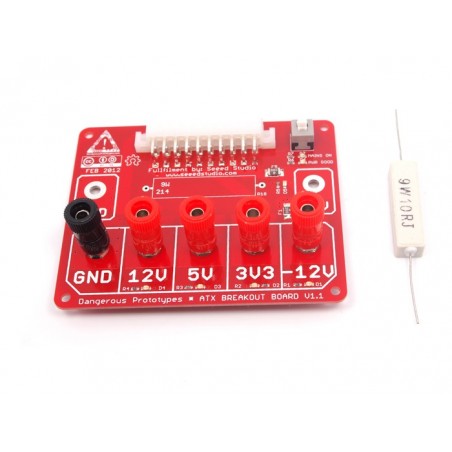







DESCRIÇÃO EM PORTUGUÊS BREVEMENTE DISPONÍVEL
Se tiver alguma dúvida neste produto não hesite em contactar-nos.
*Atenção: as imagens são meramente ilustrativas.
Recycle an ATX computer power supply into a beefy bench tool that powers your projects. The ATX breakout board routes the -12, 3.3, 5 and 12 volt ATX outputs to screw terminals, each protected by a 1.25 amp resettable polyfuse. These four voltages cover many common electronics needs, there's even a negative voltage (-12 volts) for op amps and audio projects.
An on/off button and a control circuit are included on-board, no modifications to the ATX supply are needed.
FEATURES
Note: A 9 Watt load resistor is included but not soldered to the board. In our experience most modern ATX supplies don't require a significant load on the 5 volt rail to start. An artificial load just wastes electricity and creates unnecessary heat. Please let us know your experience.
Some special ATX supplies provide -5volts, but the vast majority don't. We broke it out and added the fuse, but didn't populate the screw terminal.
RESOURCES

